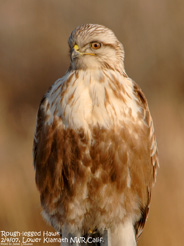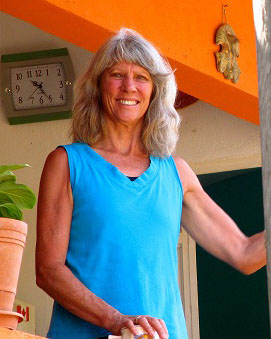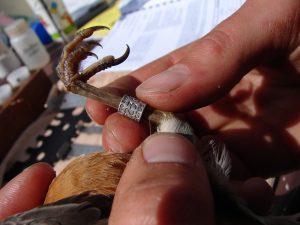
***NEWS RELEASE: May 8, 2017 6:15 AM PDT***
John Alexander, Executive Director, Klamath Bird Observatory, 541-890-7067, jda@klamathbird.org
Ashland, OR – New study demonstrates an improved approach to ensure protected areas enhance and conserve biodiversity. The results of the study were used to inform expansion of the Cascade-Siskiyou National Monument.
A team of researchers from the Klamath Bird Observatory, Point Blue Conservation Science, and other partner organizations used big data and fine-scaled modeling to 1) evaluate an existing network of protected areas in the Klamath Siskiyou Bioregion of southern Oregon and northern California, and 2) to identify and prioritize new areas for protection. The study used birds as indicators of important habitats and biodiversity.
The researchers found that the region’s protected areas, including seven National Parks and Monuments, were protecting coniferous forest habitat. However, adequate amounts of grassland and oak woodland habitats were not being protected. Birds that are associated with these under-protected habitats have been identified as at-risk at both national and regional scales and the conservation of grasslands and oak woodlands has become a priority.

Results from the study identified some protected areas where grassland and oak woodland birds did occur, as well as additional areas that, if protected, would increase the amount of priority birds protected by the region’s Parks and Monuments. Specifically, these priority habitats occur within the Cascade-Siskiyou National Monument and on adjacent multiple-use lands. This scientific insight informed science-driven recommendations to expand the Cascade-Siskiyou National Monument. With support from Oregon’s US Senators Wyden and Merkley, President Obama signed an executive order on January 12, 2017 increasing the size of Cascade-Siskiyou National Monument by more than 45,000 acres resulting in more protection for grassland and oak woodland birds.
“This study offers robust scientific evidence that expanding the Cascade-Siskiyou National Monument provides critical protection to an amazing ecosystem found nowhere else in the world, and will serve Oregonians well for decades to come,” said Oregon’s Senator Jeff Merkley. “National monuments are American treasures that belong to the people.”
This study and its application offer an improved science-based approach to evaluating protected areas and identifying and prioritizing new areas for protection. The results were published today by the Ecological Society of America in a special feature of the journal Ecosphere, Science For Our National Parks’ Second Century. The special feature highlights the crucial value of long-term monitoring and scientific inquiry and the role of science in informing natural resource management and conservation on public lands. This research was completed with support from the National Park Service, Bureau of Land Management, and US Forest Service and contributes to the Partners in Flight bird conservation initiative. A gigantic amount of data used for this research was made available through the Avian Knowledge Network. The paper can be accessed online at http://onlinelibrary.wiley.com/doi/10.1002/ecs2.1799/full.
Citation: Alexander, J. D., J. L. Stephens, S. Veloz, L. Salas, J. Rousseau, C. J. Ralph, and D. A. Sarr. 2017. Using regional bird density distribution models to evaluate protected area networks and inform conservation planning. Ecosphere 00(00):e01799. 10.1002/ecs2.1799
Click here to download a zipped press package: News Release – Science informs protected area evaluation and expansion (RELEASE DATE 5-8-2017)
Click here to download a PDF of this News Release: News Release – Science informs protected area evaluation and expansion (RELEASE DATE 5-8-2017)
# # #
About Klamath Bird Observatory:
Klamath Bird Observatory advances bird and habitat conservation through science, education, and partnerships. We work in the Pacific Northwest and throughout the migratory ranges of the birds of our region. We developed our award-winning conservation model in the ruggedly beautiful and wildlife-rich Klamath-Siskiyou Bioregion of southern Oregon and northern California. Emphasizing high caliber science and the role of birds as indicators of the health of the land, we specialize in cost-effective bird monitoring and research projects that improve natural resource management. Also, recognizing that conservation occurs across many fronts, we nurture a conservation ethic in our communities through our outreach and educational programs. Visit Klamath Bird Observatory at www.klamathbird.org.
About Point Blue Conservation Science:
At Point Blue Conservation Science (Point Blue), our 140 staff and seasonal scientists conserve nature through science, partnerships and outreach, on land and at sea. Using our long-term data, we identify and evaluate both natural and human-driven change over time. We work hand-in-hand with governmental and non-governmental agencies as well as private interests to help ensure that every dollar invested in conservation yields the most for biodiversity and our communities. Visit Point Blue at www.PointBlue.org.
About Avian Knowledge Network:
Avian Knowledge Network is a network of people, data, and technology working together to improve bird conservation, management, and research across organizational boundaries and spatial scales. Visit the Pacific Northwest node of the Avian Knowledge Network at www.AvianKnowledgeNorthwest.net.
About Partners in Flight:
Partners in Flight is a network of organizations advancing the conservation of birds via sound science, integrated conservation partnerships, habitat delivery, and targeted citizen outreach. Visit Partners in Flight at www.PartnersinFlight.org.






 Each time I step outside into nature, especially wild places, I am grateful. Golden-crowned and White-crowned sparrows herald the season with their fall arrival. As I wander through higher-elevation pine forests or the oak woodland around the valley, I am filled with awe and deep appreciation for the miracle of trees. Western Screech-Owls sing a nighttime sound. The day brings bird calls and young birds singing some fragment of the song that they will belt out when next spring arrives. Being outside is a gift, one that I want to preserve, cherish, protect, and pass on in its fullness to the next generation. I look to ways to give back to nature.
Each time I step outside into nature, especially wild places, I am grateful. Golden-crowned and White-crowned sparrows herald the season with their fall arrival. As I wander through higher-elevation pine forests or the oak woodland around the valley, I am filled with awe and deep appreciation for the miracle of trees. Western Screech-Owls sing a nighttime sound. The day brings bird calls and young birds singing some fragment of the song that they will belt out when next spring arrives. Being outside is a gift, one that I want to preserve, cherish, protect, and pass on in its fullness to the next generation. I look to ways to give back to nature.






